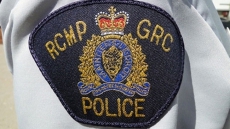TORONTO — People around the world have pledged their love, expressed their frustrations and declared their pressing need for pizza in billions of tweets in the last two years, all using emojis.
The pictograms have become an integral part of online communication, according to the more than 10.1 billion tweets collected by website EmojiTracker since it launched on July 4, 2013.
"They fill in body language, tone of voice, that sense of emotional nuance that you lose when you have just text in formal communication," said Gretchen McCulloch, a Montreal-based linguist and writer.
The standards for emojis and other computerized text are controlled by the non-profit Unicode Consortium.
On June 17, the group issued its latest update to the Unicode standard and added a bottle with a popping cork, a turkey and the oft-requested taco to its lineup of symbols.
The taco emoji had been the subject of an online petition started by Taco Bell that grew to 32,000 signatures by the time the new symbol was released.
The absence of a taco symbol and the presence of multiple forms of rice cakes and sushi reflect the Japanese origins of emojis.
Originally developed by Japanese cellphone manufacturers, existing emojis became fully integrated into the wider standard for computer text in 2010.
Since then, the Emoji Subcommittee of the Unicode Consortium has taken submissions from consortium members and the public at large on new additions. The number of emojis has grown to 1,281.
The process has led to some idiosyncrasies. There are three distinct emojis for trains, but none for a high-five. Until this year, emojis representing faces and people were only available in a single colour.
And emojis are displayed differently on different operating systems, which can lead to confusion.
The dancer emoji, for instance, was proposed to the consortium as a symbol modelled on John Travolta in "Saturday Night Fever."
Google's Android software stays relatively close to the original intention, while on Apple phones Travolta becomes a salsa-dancing woman in a long skirt.
McCulloch said emojis can't necessarily be used to replace existing language. She points to the opening sentence of "Emoji Dick," a translation of Herman Melville's classic "Moby-Dick" that spins an emoji take on "Call me Ishmael."
"Something like telephone, man, sailboat, whale, okay symbol — I don't know if that's linguistically specific," she said.
Instead, she said, what people seem to do is use emojis to emphasize or illustrate what they're typing about, as someone would illustrate a tweet about shopping with shopping bags.
Neil Cohn is a post-doctoral fellow studying visual language at the University of California, San Diego. He says teenagers using emojis are not all that different than early humans using cave paintings.
Those drawings weren't just artistic expression, Cohn said, but were probably used to augment storytelling.
"Using images integrated with spoken language, in this case with text, is as old as human communication," he said. "This is just an extension of that, siphoned through a technological tunnel."
While the Canadian flag is represented as an emoji,
McCulloch said she wishes Canadians had an emoji to call their own, beyond the Canadian flag.
"We could have a moose emoji," she said. "That would be pretty cool."



